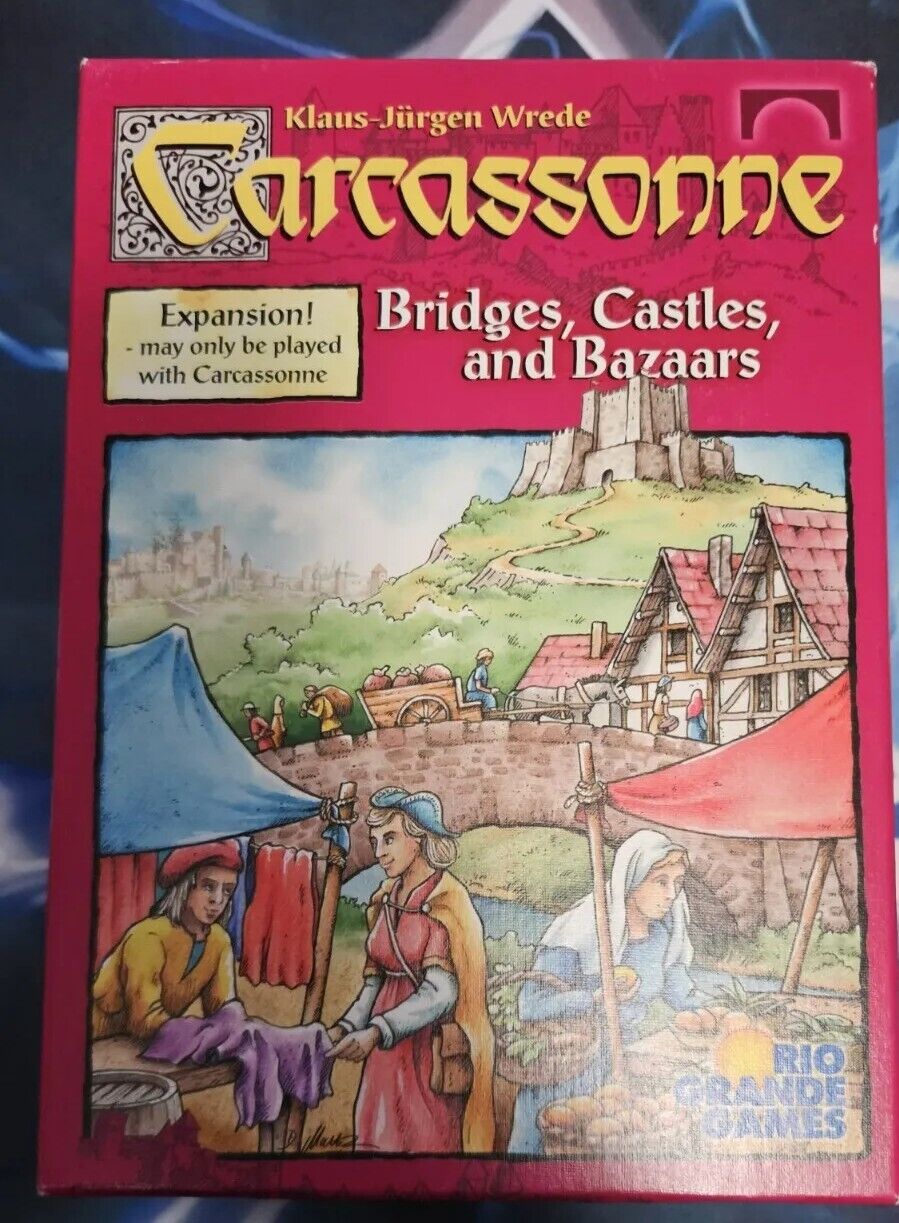Carcassonne: Expansion 8 – Bridges, Castles and Bazaars (2010)
Carcassonne: Bridges, Castles and Bazaars
“Carcassonne” is a tile-based German-style board game designed by Klaus-Jürgen Wrede and published in 2000 by Hans im Glück. The game is named after the medieval fortified town of Carcassonne in southern France and has sold over 12 million copies, been officially translated into 22 languages, and has numerous official and unofficial adaptations across various platforms. The game has been a significant and popular choice among board game enthusiasts for its strategic gameplay and unique components.
Game Components of Carcassonne: Expansion 8 – Bridges, Castles and Bazaars
How To Setup Carcassonne: Expansion 8 – Bridges, Castles and Bazaars
To set up, shuffle the new land tiles with those of the base game and stack them facedown. Distribute the bridges and castle tokens based on the number of players. For 2-4 players, each gets 5 bridges and castle tokens; for 5-6 players, each gets 4.
Gameplay Mechanics and Game Objective
Mechanics
Game Objective
The objective is to score the most points by strategically placing tiles, using bridges to extend roads, transforming cities with castles, and bidding on tiles at bazaars.
Player Experience
This expansion introduces new layers of strategy and complexity to the base game. Players must think strategically about when to use bridges to connect roads, how to bid on tiles at bazaars, and where to place castles to maximize scoring. It adds a significant boost to the game’s replayability and depth.
Pros
Cons
Personal Thoughts on Carcassonne: Expansion 8 – Bridges, Castles and Bazaars
This expansion is ideal for veteran Carcassonne players looking to add more depth and strategy to their games. It’s particularly enjoyable with high player counts, as it introduces more interactive and competitive elements. However, new players might find it overwhelming, so it’s best suited for those already familiar with the base game. If you’re looking to elevate your Carcassonne experience with new challenges and strategies, this expansion is a must-have.
We are supported by our audience. When you purchase through links on our site, we may earn an affiliate commission, at no extra cost for you. Learn more.

